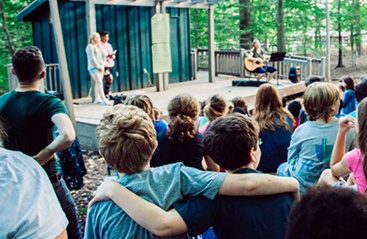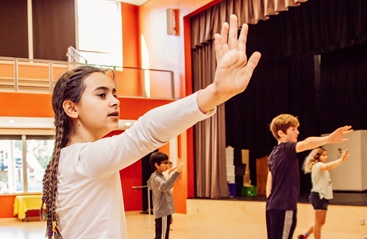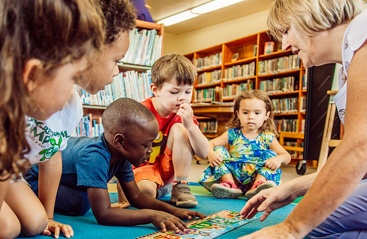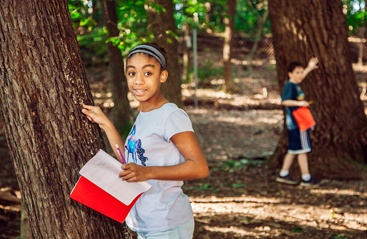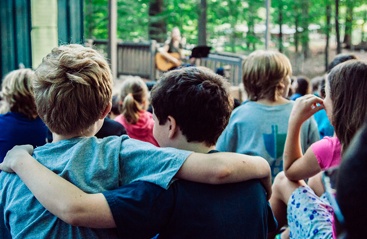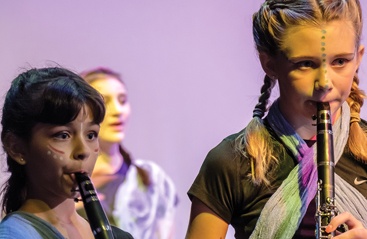Burgundy Reopening: Updated Information
This is some updated and additional information from the Burgundy Reopening Task Force regarding our plans for returning to campus. This is a follow up to our communication of July 3 outlining strategies we are developing to welcome students and faculty and staff back to the Burgundy campuses. We plan to share a final plan early next month and to offer a second town hall thereafter. With some general questions answered and more in progress regarding protocols, we are at a point now where we want to work more closely with teachers to develop more details about what learning may look like. We know it will be different, but our teachers are creative and dedicated professionals. We will support innovation in a challenging situation that discourages some of the very tenets of progressive ed. As we roll out more details, we recognize that answering a few questions creates more! More details are on the way as we deliver our ‘final’ reopening plan by early August, as previously announced.
We continue to plan to be on campus. We’ll begin to hold more meetings on campus and prepare protocols by trying them out in person. We will be prepared, however, for whatever the situation is, and our plans may pivot on science and data and whether our local numbers remain similar, turn worse, or improve. A lot happens in a few weeks during the pandemic. We’ll be attuned to VA and health department guidance. We’re not fixed on just one scenario; we have to be prepared for any. Any plans we’re making are just that — plans. We’ll rely on the experts to provide and interpret regional data, we’ll comply with local guidance and listen to the recommendations, and, if the decision is still ours to make, we’ll use our independence to make the safest and best decision we can make. Because we want to keep everyone healthy and because we have individuals and families in our staff and community with higher risk factors, we all will want to be very attentive to specifics of our protocols as they develop. Indeed we are developing a ‘social compact’ to help remind us that we share a mutual commitment for the safety and well being of all of our students, employees and community members.
This evening we will host our first parent Town Hall Zoom, for which you recently should have received an invitation. We will provide additional information and explanation of some key decisions and processes and will take questions from parents through the chat function.
Jeff and Joanne
General Reopening Plans
Some area public school systems have decided to start the year in distance learning or decided to bring children to campus only in partial or staggered groups say 2 days a week. Is Burgundy contemplating these scenarios for the start of the school year?
We are reviewing data and news constantly. We continue to plan for on-campus learning while being ready to flex as needed into different models. Burgundy is fortunate because with fewer than 300 students we have the space to physically distance with all students on campus at once, whereas some public schools may have many times that number of students and only one building and little to no campus to use outdoor space. Few schools are so fortunate. Most independent schools plan to do as much in-person education as they can, per distancing and ability to do so safely. Most regional public schools were planning to stagger attendance due to space constraints, transportation issues (busing), and inability to distance appropriately with all students on campus. Some are now going all remote as the logistics and questions of implementing a hybrid educational model are too challenging when physical space is limited.
As a smaller school, we have more flexibility, but we will not make decisions that fly in the face of public health data and will continue to prioritize the health of our community! On that note, if you did not see the Dr. Fauci interview the other day, it was as balanced and helpful a public health update as we’re likely to find, and we share it here. I highly encourage you to watch the whole thing. As Dr. Fauci and all medical and public health personnel are reiterating, it is the layering of the mitigation strategies—staying home when we’re sick and implementing screening, masks, distancing, hand washing and so forth—that creates the safest possible environment. In addition we are working on a social compact for all employees and families and will be prepared to ask students to stay at home if the protocols called for are not being followed.
Our current mitigation plan layers for returning to school on campus include: physical distancing of 6 feet; wearing facemasks; maintaining small classes in cohorts and operating spread out across campus; taking all employees’ and students’ temperatures as they come onto campus; and keeping our campus closed to everyone other than students, employees and essential visitors.
Are we planning for everyone to return to campus no matter what?
No. This is a fluid, evolving, shifting situation. We are watching the region’s pandemic data and shaping our approach to the conditions that exist in our community and the unique context of Burgundy. We’ll observe which Virginia reopening phase we’re in and where VA and/or NOVA are in their pandemic management plans and what the latest science and data are telling us, along with the CDC, WHO, and AAP guidelines, to decide what kind of reopening makes best sense. At present, those conditions allow us to plan for in-person learning, with our best efforts to accommodate students who cannot participate in the on-campus program. We are taking a multi-layered approach to safety precautions to help the entire Burgundy community stay as safe as possible. We will work in close coordination with local and state authorities, and we are preparing to adjust plans as needed based on changing conditions.
What did the recent parent survey tell us?
At the time of surveying (first week of July) a strong majority of parents (¾) were comfortable sending their children back to school in person. The majority of the remainder were concerned about how the virus will unfold in our area over the summer and sought more details about our protocols before committing to a full return. A handful responded that they would not feel comfortable at this time returning their students to school and back into a full program. Families support the use of masks at school. A few wonder about breaks from masks. Other comments included questions about cohorts, health protocols for being on campus, enforcement of such protocols, and remote learning plans.
How does this information square with the employee survey a week or so earlier?
Surveys, our Town Hall with employees Thursday night (7/16/20), and individual conversations tell us that employees generally want us to be able to get kids back to school, if we can do it safely. There are some concerns and questions, both about safety and logistics and how we’ll deliver a Burgundy education while physically distanced, along with how we’ll serve children who remain at home. Like parents, employees are hungry for more information and details, which we’re working hard to develop, increasingly with teachers themselves. Both employees and parents are expressing concern about the general status of the pandemic and regional trends. Also similar to parents, employees have questions about enforcement of protocols and maintaining the integrity of cohorts.
Are we taking special measures to protect or address the health and potential vulnerabilities of children of color — and any community members statistically at higher risk or vulnerability?
We are mindful of communities and individuals within our total community who may be more vulnerable to the virus due to race, age, health or other reasons, and our planning is geared toward protecting the most vulnerable members in our community. The several measures we are taking to mitigate risk for all are of even more importance in our shared responsibility to help protect our more vulnerable community members.
Daily health monitoring, including daily temperature taking for students and employees and parent certifications, and continuous observation of our children and staff, will be primary mitigators along with masks and distancing, including cohorts, in consideration of everyone’s health but especially the higher prevalence and serious nature of Covid-19 in communities of color and other risk groups, and more vulnerable individuals. In addition, we are putting processes in place to ensure all of our students have access to the technology needed to fully access online aspects of our program and are comfortable using them in school and from home.
Careful layering of mitigation measures and offering remote instruction are the two most important ways we are serving any higher risk populations. And our social compact will be an important part of a community-minded approach to keeping our community as well as possible. We all must maintain careful attention to our protocols for the benefit of everyone, but especially the more vulnerable amidst our community.
We will continue to monitor and assess and adjust as needed our response to protecting our full community and any specific DEI-related concerns moving forward. Your thoughts and questions are welcomed at all times!
Are we committed to providing equitable at-home learning for students who can’t come to school?
We will provide the most equitable education we can. We’ll dedicate resources as we can to support children at home. To do that we’ll have to support teachers. We’re looking at physical and technical support for teachers, including extra staffing hands and camera systems. Special attention will be needed in planning for our youngest students.
How are we preparing for the possibility of remote learning?
Along with our preparations for being in school, we must also be prepared for Remote Learning if and when campus were to close again. Our Academic Continuity Task Force is currently reworking the Burgundy Remote Learning plan, taking into account feedback collected from families and faculty and best practices learned from other schools. Many of our teachers have engaged in summer professional development aimed at best practices around remote learning. While details will vary by division, a few of the more general updates to the Remote Learning Plan will include:
– More synchronous (live/real-time) meetings for students throughout the day
– Improved schedules
– Fewer optional and more required activities
– Reinstating trimester (Middle School) and semester grades (Lower School)
– More frequent homeroom/advisory meetings to ensure community connection points and that the social-emotional needs of students are met
It should also be noted that while we increase the frequency of synchronous meetings, we are still not trying to recreate a remote version of the full in-person schedule. We do not feel that screen time for an entire day is developmentally appropriate or healthy. Instead the full program will combine synchronous and asynchronous learning experiences in developmentally appropriate proportions.
Changes to our routines and procedures
What are we learning about masks and children?
Masks will be required on campus, and we all will need to get used to wearing them. This will take practice. From what we’ve learned from international schools who have been open, children and adults can adjust to wearing masks. Some schools have noted that young children in particular, with consistent reinforcement and clear procedures, adapted more readily. We urge families to prepare their children for wearing masks over the remainder of the summer, experimenting with different types of masks. Masks should cover both mouth and nose and fit snugly against the face without big gaps; masks with exhalation valves or bandanas are not effective for preventing the spread of the virus and will not be acceptable. We’ll have more information regarding questions about masks or other face coverings in the final plan.
How are we defining cohorts?
A cohort for us is a small student group that stays as separate from other student groups as much as possible. All classes in the Lower School will remain in strict classroom cohorts of not more than 15 as we start school, and specialist teachers will interface with students outdoors or in their homeroom spaces. Middle School grades will operate in smaller sections of 10-15 for most of the day, but their “cohort” will likely be the grade level to allow for regrouping for math and world language. Cohorts will have access to many outdoor learning spaces; some will have sign-ups and assigned times to prevent overlapping or mixing of students in different cohorts.
How do cohorts work?
The cohort model limits interactions at school to a small number of people. Students will interact with the same small group all or most of the school day and not mix with other cohorts. (In order to allow Middle School students to regroup for math and world language, they will likely have some, limited, interactions beyond their immediate cohort with other members of their grade level, making the entire grade the cohort in Middle School. Peer schools are taking a similar approach.) The class cohort is not an absolute bubble but is a significant layer of risk mitigation during the school day, designed to minimize the spread of any COVID cases that may occur among students or faculty and to facilitate contact tracing. Because our lives outside of school involve contact with many more people (e.g., carpools, friends and family outside of Burgundy, religious services, parent professional obligations, team sports, and even siblings in other classes and schools), the cohort model is just one (very important) mitigation strategy to minimize the number of people that each student interacts with during the school day.
Will there be Extended Day?
In considering the safest ways to keep our community safe, we have made the difficult decision to adhere to the cohort model which makes it extremely challenging for us to run Extended Day, at least to start the school year. Day school cohorts mixing in Extended Day erodes the efficacy of the cohort model. We realize this presents a difficulty for families that rely on after school childcare but we determined that the risks to our ability to remain open for the school day for all children, which is our first goal, were just too great.
What is being considered for more outdoor teaching and learning activities, whether on decks or around campus?
The maintenance team is updating and augmenting or servicing various outdoor classroom areas across campus, from installing sun shades to placing or replacing ‘stump circles’ to examining more traditional seating options we already have for appropriateness.
What will Burgundy do to improve ventilation of indoor spaces?
We are looking into this. Opening doors/windows is recommended (in our case, only when systems are turned off in good weather) and regular filter changes will be done. There are newer technical means for air purification that we are also looking into. No method removes all risks, but again, ventilation of indoor spaces is another layer of mitigation to support a healthier environment.
What other campus improvements or measures are being instituted?
We are making improvements to our campus and our operations. Our maintenance team is building outdoor hand washing stations all over campus There will also be a lot of guidance for teachers, staff, students and parents regarding safety and health practices, including video and in-person training. Administrators will be observing at a distance to support enforcement.
What special cleaning measures will we have in place?
We will have two janitorial staff on campus on school days to help us keep common and ‘high-touch’ surfaces and areas sanitized. Our cleaners will continue to do their professional cleaning in the late afternoons and evenings after school. Teachers and students and staff can continue to play a key role in mitigating the spread of germs by practicing good hand-washing hygiene and helping us clean surfaces as part of regular routines, utilizing typical flu season practices.
Are we taking Fall Cove trips?
We are still considering the risks and logistics and will make a later and more informed decision. They may be day trips if we do go. PS: We are delighted and grateful that the BCWS and its staff were able to welcome 2019-20 first grade students and parents in smaller groups for a first Cove trip this summer and are offering diverse other programming through the summer.
COVID-specific health and safety protocols
How will the school ensure that community members are not bringing the virus into the community?
We are planning to take temperatures at morning arrival at carpool and will not allow any student with a fever to remain at school. We will all be monitoring students throughout the day for any student exhibiting any symptoms. We also will ask families to sign a social compact stating that they will adhere to the school’s policies and protocols, which include keeping their children at home if they are ill, or exhibit any symptoms of illness and filling out a daily health form.
The social compact will also outline shared expectations of behavior for every community member to continue to practice safety protocols such as mask wearing, distancing and hand washing at all times. While we are asking all families to be mindful of their health and compliance with health and safety protocols at all times, we are asking families to use extra precautions especially if they have traveled to a high incidence area within 14 days of the start of school.
What happens when a student, family member, or teacher gets the virus?
If a member of the community tests positive, we will take immediate steps to minimize the chance of spread and follow all local health department instructions and protocols. The cohort system should help limit the number of people in contact with the person who tested positive. Second, we will contact everyone known to have been in contact with that individual while maintaining confidentiality in accordance with ADA and FERPA regulations. Third, we will institute enhanced cleaning protocols in the areas where that individual spent time. Students and staff will be permitted to return to school in accordance with CDC and Fairfax County Health Department guidelines. Finally, we will recognize that whoever has tested positive, whether a colleague or a student or a parent, is not just a ‘case’ but a valued and loved community member, and therefore the final element of our response will be support for that person, their family, and any other members of our community who need support at that time.
How will we support children’s emotional development, fears, concerns and growth in the upcoming year? Are we staffed adequately?
We are looking at ways we can augment our current classroom and health and wellness model including use of current staff as well as a mental health triage training program for faculty and staff. We also will continue to prioritize children’s social and emotional well being, and that means taking ample time as a classroom community to meet children where they are and to teach them emotional intelligence, sensitivity, community-mindedness, and self-care.
Postscript for interim updates
We are all coming to terms with the fact that this year will be a very different Burgundy experience for all of us and likely a dynamic situation. We urge families to speak candidly with students to prepare them for all the new health and safety rules and procedures, while remembering that children are very resilient and tend to adapt to circumstances, given time and care to do so. In balancing our desire to welcome students and faculty and staff back on campus in the safest way possible during a pandemic, we will err on the side of extra precautions. There are many decisions yet to be determined, but we’re making headway. As always, please reach out to us with questions or concerns at covidinfo@burgundyfarm.org.
Joanne and Jeff on behalf of the Task Force
Inquire Now
Burgundy is a one-of-a-kind independent school for Junior Kindergarten through 8th Grade. We believe children learn best in an inclusive, creative, and nurturing environment that engages the whole child.
3700 Burgundy Road
Alexandria, VA 22303
703.960.3431
Accredited by:
Affiliated with: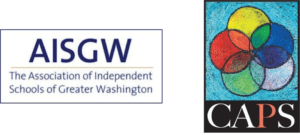
Partners with:
©2025 Burgundy Farm Country Day School
Designed and developed by The Design Channel![]()

